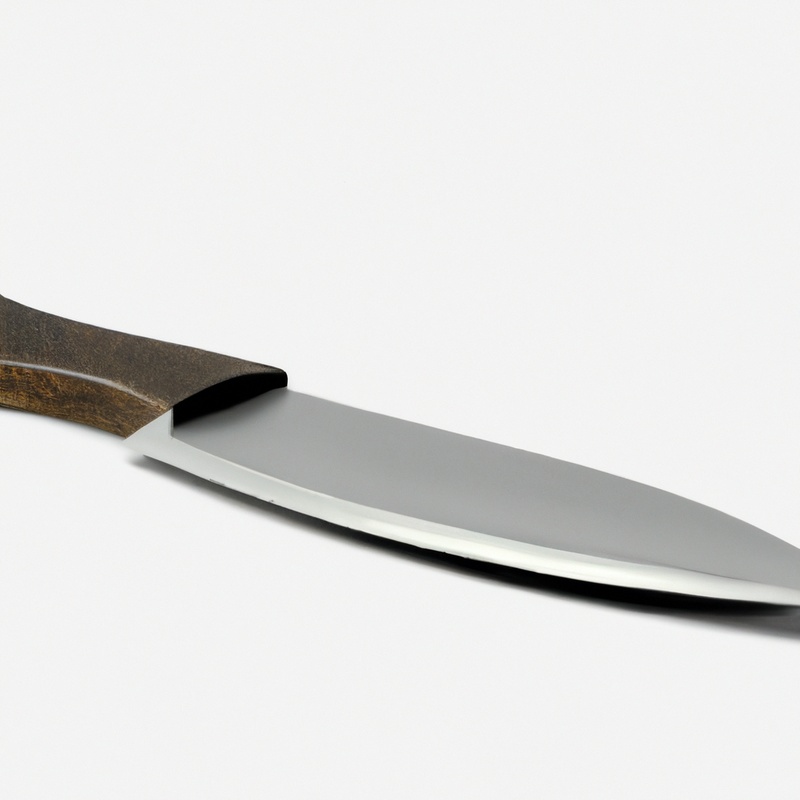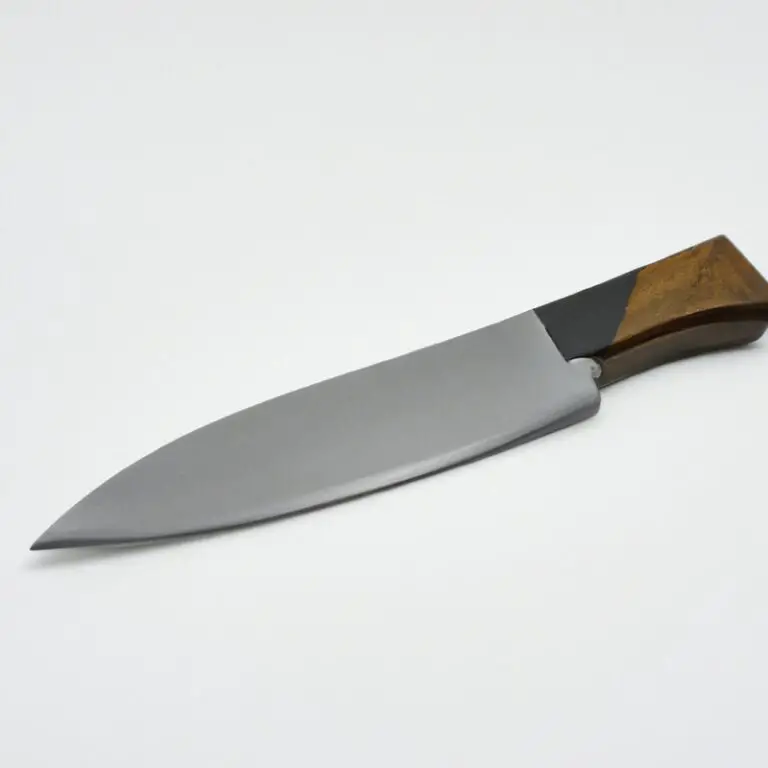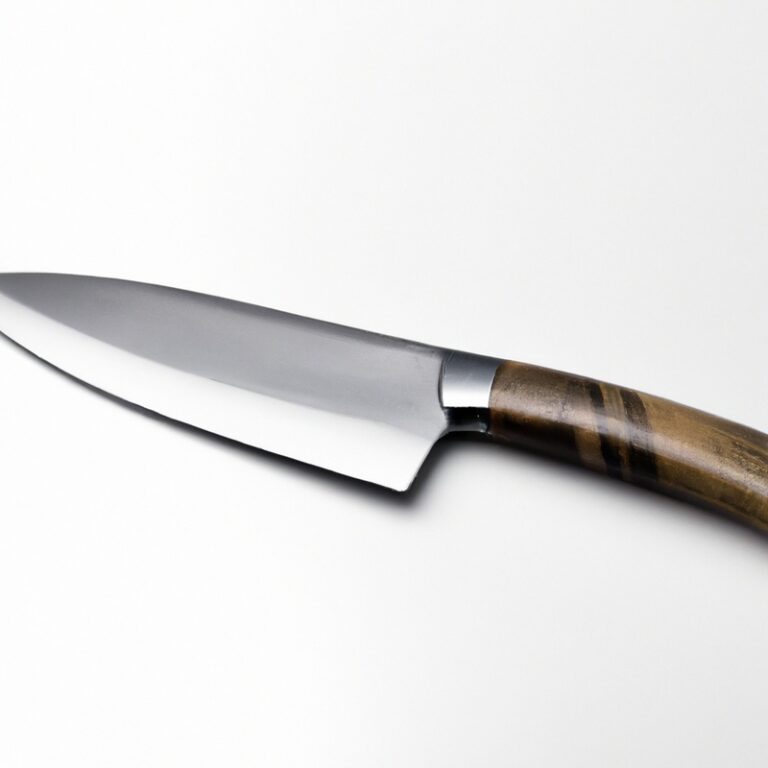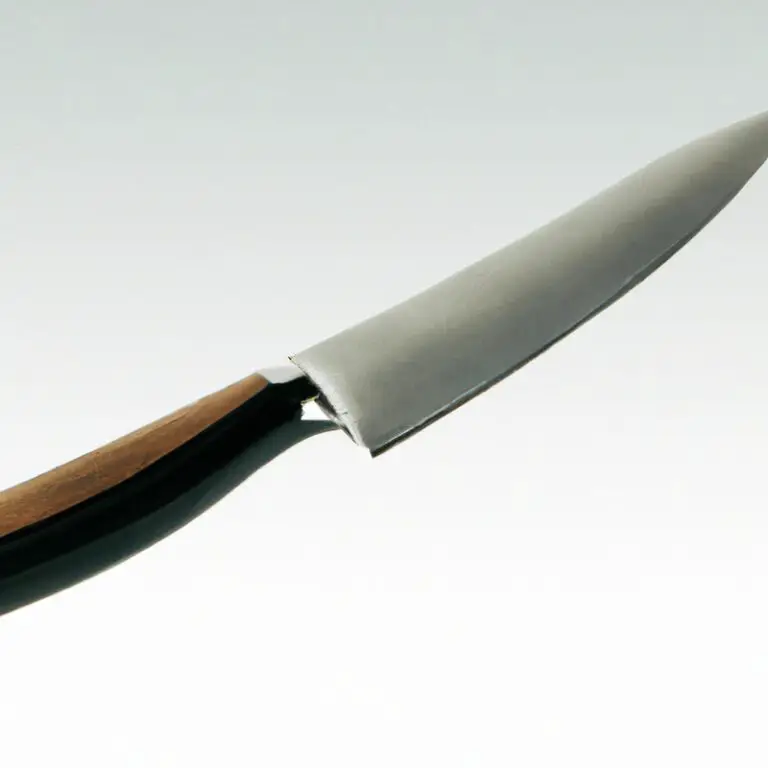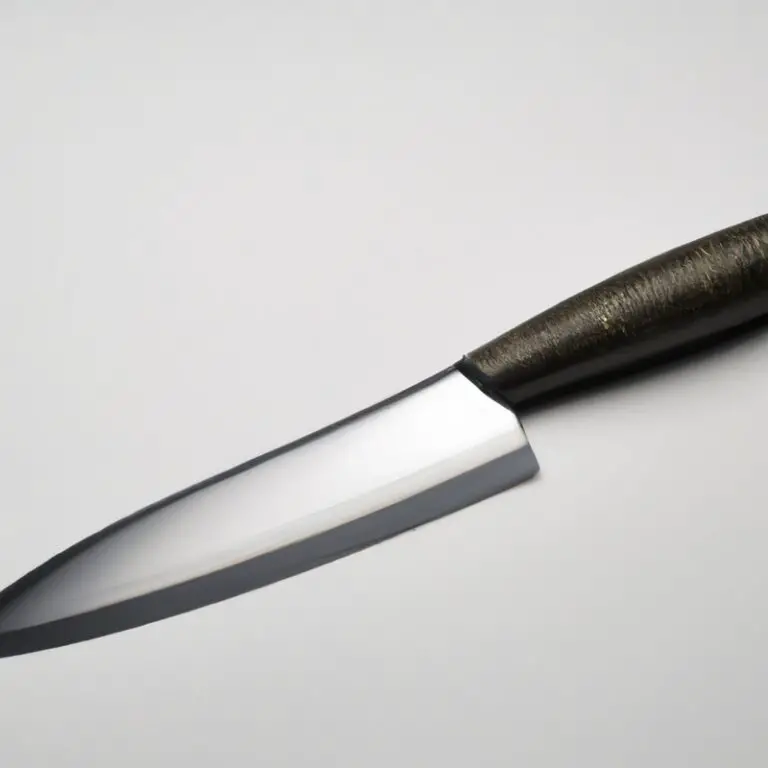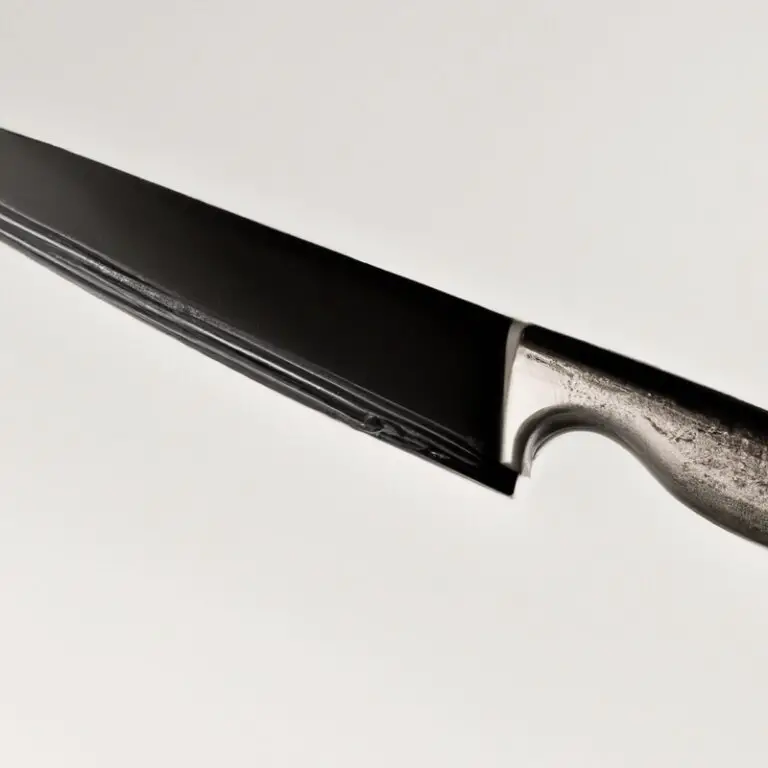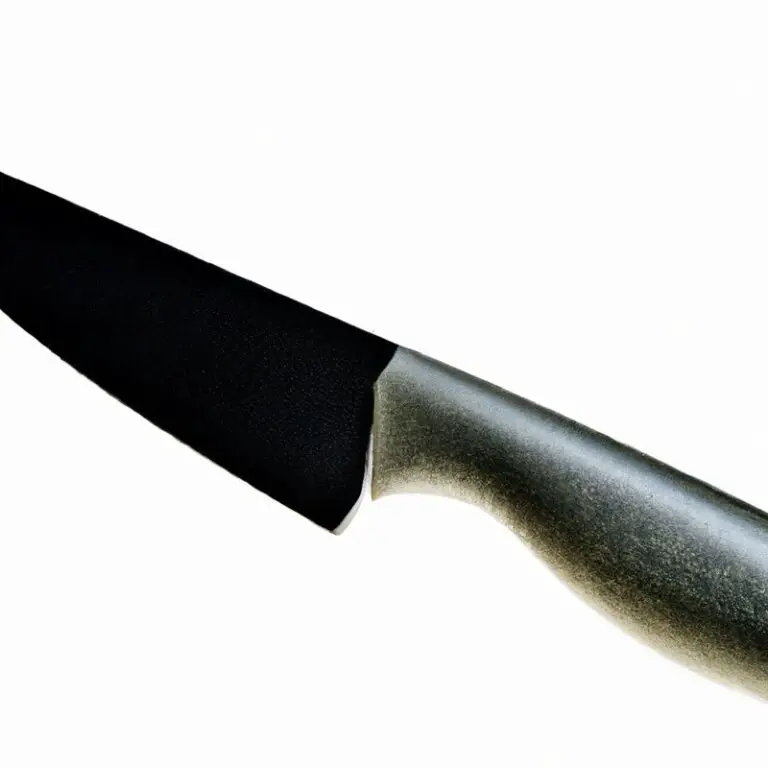How To Remove Stains From a Gyuto Knife Blade? – Easily!
Key Takeaways:
- Clean your Gyuto knife blade regularly to prevent stains and maintain its sharpness.
- Use a gentle abrasive product such as baking soda or toothpaste to remove stains from your blade.
- Avoid using harsh chemicals and abrasive materials as they can damage your blade’s surface.
- Apply a protective coating such as food-grade mineral oil to your blade after cleaning to prevent future stains and rust.
A stained Gyuto knife blade can be frustrating, especially if you are not sure how to remove the stains properly. But fear not, because in this article, we will guide you through the process of removing stains from your Gyuto knife blade.
From identifying the type of stain to preparing your work area and using chemical vs.
natural cleaners, we’ve got you covered. We’ll even provide you with expert tips on how to prevent future stains and damage to your knife blade.
So sit back, grab your Gyuto knife, and let’s get started on restoring its shine and sharpness.
| Stain Type | Removal Method |
| Rust stains | Use a damp cloth or sponge to apply a small amount of baking soda to the affected area. Rub gently until the rust stain disappears. Rinse with water and dry immediately. |
| Acidic stains (e.g. lemon or tomato juice) | Apply a small amount of baking soda to a damp cloth or sponge and gently rub the affected area. Rinse with water and dry immediately. |
| Dark stains (e.g. soy sauce) | Apply a small amount of toothpaste to a damp cloth or sponge and rub gently over the affected area. Rinse with water and dry immediately. |
| Hard water stains | Use a mixture of equal parts water and distilled white vinegar. Apply the solution to a damp cloth or sponge and gently rub over the affected area. Rinse with water and dry immediately. |
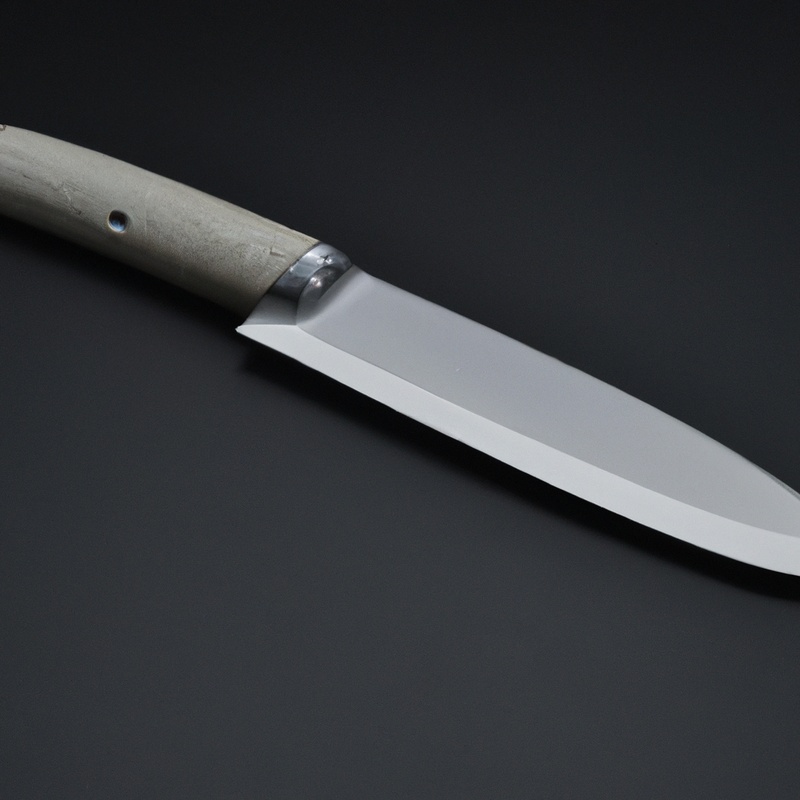
Understanding the Gyuto Knife Blade: Learn About the Materials Used and What to Avoid to Prevent Further Damage
The Gyuto knife blade is typically made of high-carbon or stainless steel, with a hardness rating of 58-61 on the Rockwell scale. As a result of its sharp edge, it is especially vulnerable to stains, rust, and corrosion.
To prevent the blade from incurring further damage, it is important to avoid using harsh cleaners or abrasive materials and to clean it thoroughly after each use.
High-quality honing steel or ceramic rods can be used to maintain the blade’s sharpness. It is also essential to store your Gyuto knife in a dry, well-ventilated area to prevent rust and avoid leaving it in contact with moisture or acidic liquids.
With proper care and maintenance, your Gyuto knife can remain in excellent condition for years to come.
Identifying the Type of Stain: Differentiate Between Rust, Corrosion, and Stains to Determine the Best Removal Method
To effectively remove stains from a Gyuto knife blade, it’s crucial to understand the type of stain you’re dealing with and choose the right removal method. Rust, corrosion, and stains can all leave unwanted marks on your knife, but they require different approaches for effective and safe removal.
Rust appears as a reddish-brown, flaky coating on the blade and is the result of iron reacting with oxygen and water.
Corrosion, on the other hand, occurs when acidic substances or salt come into contact with the blade and manifests as pitting or discoloration. Stains can be caused by food, liquids, or other substances and can vary in color and intensity.
To determine the best removal method for your stain, it’s essential to identify the type of stain first.
For example, rust removal typically requires an acid-based cleaner, while stains caused by food or liquids may respond better to natural remedies like baking soda and vinegar. Overall, taking the time to properly identify the type of stain on your Gyuto knife blade can save you time and effort in the long run, as you’ll be able to select the most effective and safe cleaning method.
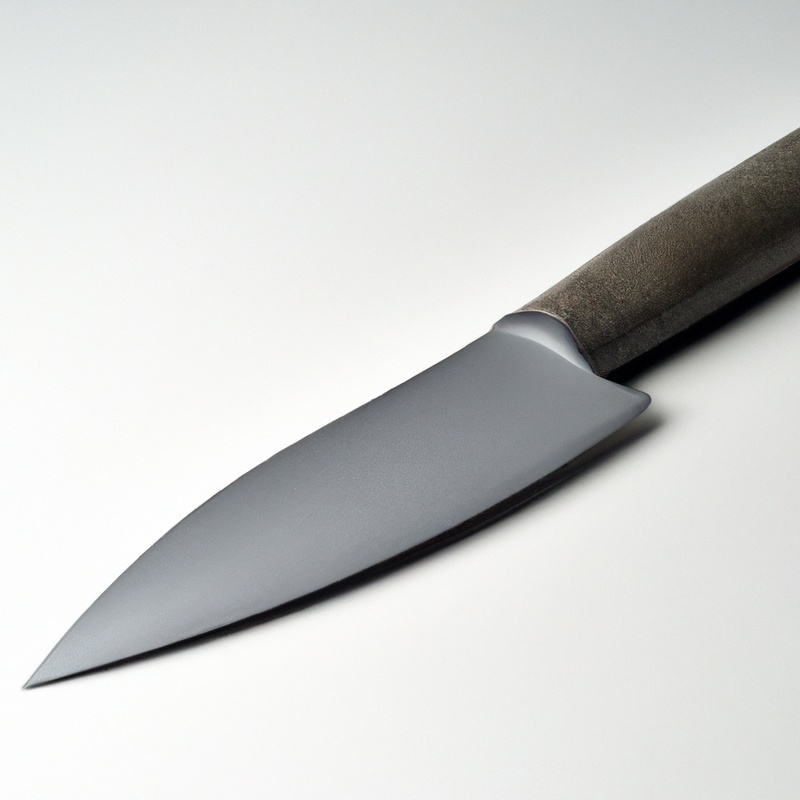
Preparing Your Work Area: Tips to Ensure Safe Handling of Your Knife During the Cleaning Process
Preparing your work area is crucial to ensure safe handling of your Gyuto knife during the cleaning process. Here are some tips to consider:
- Choose a well-lit, dry, and clean workspace to prevent accidents and ensure visibility while working.
- Use a soft and non-abrasive cleaning mat or towel to avoid scratching the blade’s surface while cleaning it.
- Keep your knife away from other sharp objects or tools to prevent accidental damage or injury.
- Wear protective gloves to protect your hands from any sharp edges or chemicals used during the cleaning process.
- Never leave your knife unattended in an area where it can be easily knocked over, and always be aware of its location when cleaning.
By following these tips, you can ensure a safe and effective cleaning process for your Gyuto knife blade.
Tools and Materials: Essential Items to Have on Hand for Effective and Safe Stain Removal
When it comes to removing stains from a Gyuto knife blade, having the right tools and materials on hand is essential. Here are some items you should consider having:
- Soft-bristled brush – to gently scrub away stains without scratching the blade
- Microfiber cloth – for wiping down the blade and ensuring it’s completely dry after cleaning
- Rust eraser or polishing compound – to remove stubborn stains and rust
- Vinegar or lemon juice – for natural and safe stain removal
- Metal polish – to restore shine and protect the blade from future stains
While some chemical cleaners may also work, it’s important to follow safety precautions and ensure the product is safe to use on your knife blade material. With these tools and materials, you can effectively and safely remove stains from your Gyuto knife blade.
Chemical Vs. Natural Cleaners: Pros and Cons of Each Method and How to Use Them Safely
There are two main categories of cleaning solutions when it comes to removing stains from your Gyuto knife blade: chemicals and natural cleaners. Chemical cleaners are often considered more effective at attacking tough stains and rust.
Still, they come with potential downsides, including being toxic and potentially harmful to your health and the environment.
It’s important to use them safely, following the manufacturer’s instructions and wearing protective gear such as gloves and glasses. On the other hand, natural cleaners are typically safer and more environmentally friendly, but may not be as effective at removing stubborn stains.
However, they are generally non-toxic and safe to use around children and pets.
When deciding between chemical and natural cleaners, consider the type of stain and the specific cleaning needs of your Gyuto knife blade. Both methods can get the job done, but it’s crucial to use them safely and responsibly for optimal results.
Step-by-Step Cleaning Process: A Detailed Guide on How to Remove Stains from Your Gyuto Knife Blade
Step-by-Step Cleaning Process: A Detailed Guide on How to Remove Stains from Your Gyuto Knife Blade
- Identify the type of stain using a magnifying glass and differentiate between rust, corrosion, and stains.
- Prepare your work area by setting up a flat surface, wearing protective gloves, and gathering necessary tools such as vinegar, baking soda, rust remover, or abrasive cleaner.
- Dip a soft cloth into vinegar or baking soda solution and rub the blade in the direction of the grain to remove light stains.
- If the stain is heavy, apply rust remover or abrasive cleaner, and scrub the blade gently using a steel wool pad.
- Rinse the blade with warm water and dry it immediately with a clean cloth.
- Using a microfiber cloth, apply a small amount of mineral oil to prevent rust and keep the blade shiny.
- Store the Gyuto knife in a clean, dry place to avoid exposure to moisture or humidity.
Post-Cleaning: Essential Tips to Ensure Your Knife Blade Remains in Excellent Condition
After cleaning your Gyuto knife blade, it’s essential to take proper measures to maintain its excellent condition. Here are some post-cleaning tips to help ensure your knife serves you for a long time:
- Dry your knife blade completely before storage. Moisture can cause rust and corrosion, which may damage your knife.
- Store your knife in a safe place, away from sources of moisture and extreme temperature fluctuations.
- Avoid using steel wool or abrasive materials to clean your knife’s blade. These materials can scratch the blade and make it more prone to rust and corrosion.
- Use a honing steel to keep your knife’s edge sharp.
- Regularly oil your knife’s blade to protect against rust and corrosion. A food-grade oil like camellia oil is ideal.
By following these essential tips, you will keep your Gyuto knife blade in excellent condition for many years to come.
Precautions and Best Practices: Discover How to Avoid Future Stains and Damage on Your Gyuto Knife Blade
To avoid future stains and damage on your Gyuto knife blade, it is crucial to take some necessary precautions and maintain some best practices. Firstly, always clean and dry your Gyuto knife after every use.
Secondly, avoid cutting acidic foods and always wipe off any food residues from the blade.
Thirdly, store your knife in a dry and moisture-free place. Also, regularly sharpen your knife with the correct sharpening tools and avoid using steel sharpeners that are too abrasive.
Additionally, use cutting boards made of wood or plastic rather than glass, metal, or ceramics, which can quickly dull the blade.
Lastly, handle your knife with care, never hit or bend it. By following these simple precautions and best practices, you can prolong the life of your Gyuto knife blade and prevent future stains and damage.
Maintenance and Longevity: Expert Advice on How to Keep Your Gyuto Knife Blade in Optimal Condition
To ensure your Gyuto knife blade remains in optimal condition and prevent stains, regular maintenance is crucial. Follow these expert tips to maintain your knife’s longevity:
- Clean and dry your knife blade thoroughly after every use.
- Use a honing steel to maintain the knife’s edge regularly.
- Store your knife in a knife block or on a magnetic strip to avoid damage from other utensils.
- Avoid cutting hard foods or using your knife as a pry or screwdriver.
- Sharpen the blade when you notice dullness to prevent excessive pressure and damage to the blade.
- Handwash your knife and avoid using a dishwasher.
- Use a rust cleaner or rust eraser to remove any visible rust spots or stains.
Remember, proper care and maintenance of your Gyuto knife blade will keep it in excellent condition for years to come.
Special Considerations: How to Handle Stubborn Stains and Prevent Metal Fatigue
Special Considerations: How to Handle Stubborn Stains and Prevent Metal Fatigue. Removing stubborn stains from a Gyuto knife blade requires special considerations to prevent metal fatigue.
When faced with stubborn stains, it is essential that you avoid aggressive scrubbing or using abrasive materials that can further damage the blade.
To remove stubborn stains safely, consider using non-abrasive materials such as a soft cloth or sponge. Avoid using steel wool, sandpaper, or any abrasive cleaning agents that can remove the protective coating on your knife blade and expose it to moisture and rust.
Additionally, it’s important to prevent metal fatigue by regularly honing your knife blade and keeping it sharp.
A dull blade is more prone to staining and corrosion as it requires more pressure to cut through food, causing it to come into contact with acidic foods for prolonged periods. The best way to prevent metal fatigue and remove stubborn stains from your Gyuto knife blade is by using non-abrasive materials, avoiding harsh cleaning agents, and regularly honing your knife blade.
Final Verdict
Removing stains from a Gyuto knife blade is not only essential for maintaining its performance but also preserving its longevity. By understanding the type of stain, preparing your work area, choosing the right tools and cleaners, and following a step-by-step cleaning process, you can ensure safe and effective stain removal.
It is crucial to take precautions, follow best practices, and prioritize maintenance to prevent future stains and damage.
Remember, a well-maintained Gyuto knife blade can elevate your culinary skills and enhance your overall cooking experience. By implementing the practical tips and insights shared in this article, you can confidently restore your Gyuto knife blade to its pristine state and enjoy its exceptional performance for years to come.
Trust us, your Gyuto knife blade will thank you for it.

